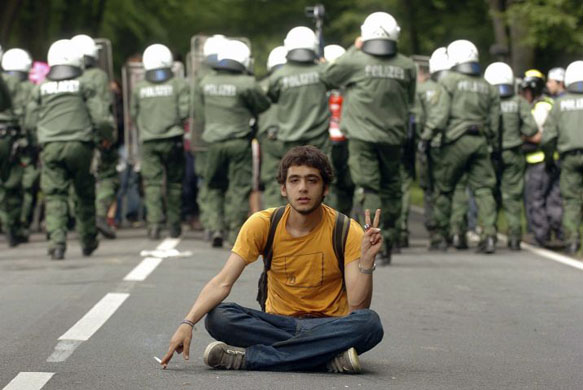 Anyone familiar with conservation knows that there are those who prefer to make headlines rather than make actual headway on the issues. Not that these tactics don’t have their place – there are times when the only way to get attention for your cause is to make a bold move.
Anyone familiar with conservation knows that there are those who prefer to make headlines rather than make actual headway on the issues. Not that these tactics don’t have their place – there are times when the only way to get attention for your cause is to make a bold move.
The trick is to know when splashy headlines and other sensational PR strategies will work and when it is better to maintain a slightly lower profile. While impressive when they work, these types of strategies have a low success rate and in some cases may do more harm than good.
When Greenpeace activists dangle from bridges, disrupting traffic, costing consumers time and money in the process, are they really furthering their cause, or are they actually moving backwards?
Another example – consider the group PETA. Many people automatically associate PETA (which actually does accomplish good things) with extreme activist methods including dumping animal remains into cars, throwing paint onto wearers of fur, breaking and entering and destruction of private property. The question you have to ask is: What has all of this done for actually furthering the cause of ethical treatment of animals? Case en point: If you ask the average Joe on the street what they know about PETA more often than not you get an anecdote about the groups reputation rather than something positive they have achieved. What’s worse, most of those same individuals are not even sure what PETA even stands for. (To be fair, many of the things they are associated with are no longer tolerated by the group, however the negative reputation remains.)
So how do you know when your extreme tactics are working and when it might be better to maintain a lower profile? Here are a few tips I’ve learned from my days of crazy over-the-top activism.
- Consider your audience – young people may become inflamed about an issue, but have little money to give. Do you need funds or simply a voice? Knowing this can help you decide who you want to reach and those you would prefer NOT to alienate.
- Have a plan – just because an action seems crazy doesn’t mean there is not a carefully laid plan behind it. Most publicity stunts are actually the result of a carefully scripted plan.
- Have a plan B – always have a contingency plan in place and know when to re-evaluate and maybe back off.
- Always look at the big picture. Maybe your crazy stunt will get some press coverage but don’t fall for those who insist that any press is good press. If you gain a few extreme followers but lose out in the short run, as many extremists do eventually become more moderate with age, are you potentially losing your future supporters.
Bottom Line: Always think first. Maybe having a hundred body bags dumped on the front steps of a leading tobacco company makes for great press and awesome commercials- that does not mean that those type of tactics will necessarily work to stop big business from destroying the last known habitat for a rare turtle.
Conservation must take into account a larger ecosystem/landscape approach if we are to truly make a difference. We as a species must consider that there is more than just a few animals and plants at stake. Understanding the psychology, culture, history and economics of a particular conservation issue will help to create smarter management plans that just may work, and probably better than just shouting at whaling vessels with a megaphone. 







